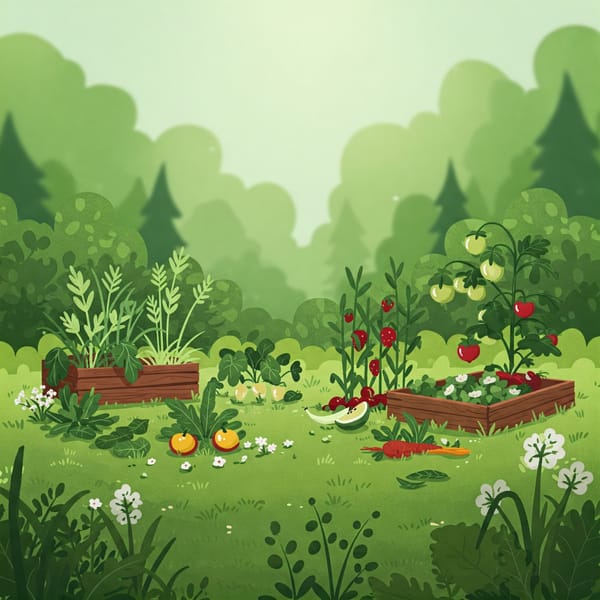How to Start a Vertical Herb Garden on Your Sydney Balcony

In bustling cities like Sydney, where space is often a luxury, the concept of vertical herb gardening has exploded in popularity. This innovative gardening method allows urban dwellers to transform their balconies into lush, green spaces, providing a connection to nature and a source of fresh herbs.
The Benefits of Vertical Herb Gardening
Vertical herb gardens offer numerous benefits, especially for those with limited outdoor space.
Space Efficiency: Vertical systems, such as wall-mounted planters, tiered shelves, and hanging containers, maximize growing space without taking up valuable floor area. This is particularly important in Sydney, where many residents have compact balconies.
Aesthetic Appeal: A well-designed vertical herb garden can transform a dull balcony into a visually stunning feature, adding color, texture, and natural beauty to the urban environment.
Improved Air Quality: Plants naturally absorb carbon dioxide and release oxygen, contributing to a healthier micro-environment on your balcony.
Increased Yield: Vertical gardening can potentially lead to a higher yield of herbs compared to traditional gardening methods in limited spaces.
Choosing the Right Herbs for Your Sydney Balcony
Selecting the right herbs is crucial for a successful vertical garden. Consider these factors:
Sydney’s Climate: Sydney has a subtropical climate with warm summers and mild winters, allowing for year-round herb growing.
Sunlight: Determine the amount of direct sunlight your balcony receives. North-facing balconies typically get the most sun, while south-facing balconies get the least. East-facing balconies receive morning sun, and west-facing balconies receive afternoon sun.
Wind Exposure: Balconies, especially on higher floors, can be exposed to strong winds that can damage plants and dry out the soil.
Herb Recommendations:
Full Sun: Mediterranean herbs like thyme, oregano, and rosemary thrive in sunny locations. Basil, sage, parsley, coriander, and lavender are also good choices.
Partial to Full Shade: Mint and chives tolerate shade well. Coriander and parsley can also grow in partial shade.
Choosing a Vertical Gardening System
There are various vertical gardening systems to choose from, each with its own advantages.
Wall-Mounted Planters: These are great for maximizing space and creating a “living wall” effect. Ensure proper installation and drainage.
Tiered Shelves and Plant Stands: These offer flexibility in arranging plants and are available in various materials and styles. Consider stability, especially on windy balconies.
Hanging Containers: Hanging baskets and railing planters utilize overhead space and are ideal for trailing herbs. Wind and watering frequency should be considered.
DIY Solutions: Repurposed materials like wooden pallets, plastic bottles, and old shoe organizers can be used to create unique and cost-effective vertical planters. Ensure materials are safe for growing edible plants and provide proper drainage and structural integrity.
Soil and Nutrient Management
Potting Mix: Use a high-quality potting mix specifically formulated for containers to provide optimal drainage, aeration, and moisture retention.
Nutrients: Herbs need essential nutrients for healthy growth. Incorporate organic matter like compost into the potting mix for a slow release of nutrients.
Fertilization: Use a slow-release organic fertilizer at planting time and supplement with a diluted liquid fertilizer or fish emulsion during the growing season. Avoid over-fertilizing.
Soil pH: Most herbs prefer a slightly neutral to slightly acidic soil pH (between 6.0 and 7.0).
Watering Techniques
Check Soil Moisture: Water when the top inch of soil feels dry.
Water Deeply: Water until water drains from the bottom of the container.
Watering Time: Water in the early morning or late evening to minimize evaporation.
Watering Method: Avoid overhead watering to prevent fungal diseases.
Self-Watering Systems and Drip Irrigation: These can be convenient and efficient alternatives to manual watering.
Drainage: Ensure containers have sufficient drainage holes to prevent root rot.
Pest and Disease Control
Common Pests: Aphids, slugs, snails, spider mites, caterpillars, and psyllids are common herb garden pests in Sydney.
Natural Pest Control: Attract beneficial insects, use physical barriers, DIY sprays, handpick pests, and plant insect-repelling herbs.
Common Diseases: Powdery mildew and root rot are common fungal diseases.
Disease Prevention: Ensure good air circulation, avoid overwatering, and remove affected plant parts.
Preventative Measures: Choose disease-resistant varieties, inspect plants regularly, practice good garden hygiene, and provide optimal growing conditions.
Designing Your Vertical Herb Garden for Aesthetic Appeal
Integrate with Your Balcony’s Style: Choose vertical gardening systems and containers that complement your balcony's design theme.
Choice of Containers and Materials: Use different materials, colors, textures, and shapes to create visual harmony and interest.
Arrange Your Herbs Thoughtfully: Group herbs with similar needs together and arrange plants by height and foliage color for a visually pleasing display.
Add Decorative Elements: Incorporate fairy lights, small sculptures, plant labels, and seating areas to enhance the ambiance.
Optimizing Space and Layout
Mature Size and Growth Habits: Understand how large each herb will grow to ensure proper spacing and prevent overcrowding.
Companion Planting: Grow compatible plants together for mutual benefits, such as pest deterrence or improved growth. Avoid planting incompatible herbs together.
Efficient Arrangement: Stagger plants in tiered systems, utilize the full vertical height, and consider the spread of each herb when deciding on spacing.
Conclusion
Creating a vertical herb garden on your Sydney balcony is a rewarding endeavor that allows you to connect with nature, enjoy fresh herbs, and enhance your living space. By considering the specific conditions of your balcony, selecting suitable herbs, and implementing appropriate gardening techniques, you can cultivate a flourishing green oasis in the city.




